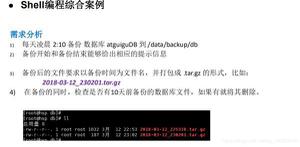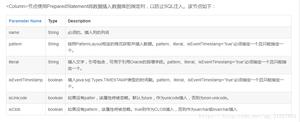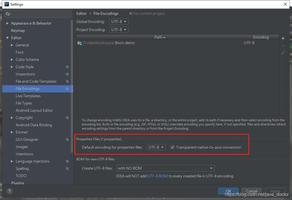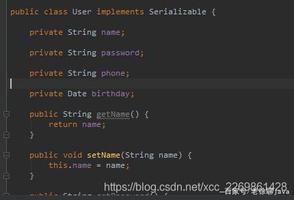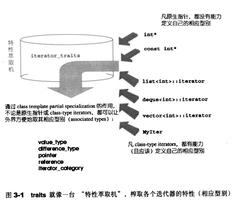SimpleDateFormat线程安全问题深入解析

背景
众所周知,Java中的SimpleDateFormat不是线程安全的,在多线程下会出现意想不到的问题。本文将解析SimpleDateFormat线程不安全的具体原因,从而加深对线程安全的理解。
例子
简单的测试代码,当多个线程同时调用parse方法的时候会出问题:
public class SimpleDateFormatTest { private static SimpleDateFormat format = new SimpleDateFormat("yyyy/MM/dd HH:mm:ss");
public static void main(String[] args) {
for (int i = 0; i < 20; i++) {
new Thread(() -> {
try {
System.out.println(format.parse("2019/11/11 11:11:11"));
} catch (ParseException e) {
e.printStackTrace();
}
}).start();
}
}
}
部分输出如下:
Mon Nov 11 11:11:11 GMT 2019Thu Jan 01 00:00:00 GMT 1970
java.lang.NumberFormatException: For input string: ""
at java.lang.NumberFormatException.forInputString(NumberFormatException.java:65)
at java.lang.Long.parseLong(Long.java:601)
at java.lang.Long.parseLong(Long.java:631)
at java.text.DigitList.getLong(DigitList.java:195)
at java.text.DecimalFormat.parse(DecimalFormat.java:2051)
at java.text.SimpleDateFormat.subParse(SimpleDateFormat.java:2162)
at java.text.SimpleDateFormat.parse(SimpleDateFormat.java:1514)
at java.text.DateFormat.parse(DateFormat.java:364)
at package1.SimpleDateFormatTest.lambda$0(SimpleDateFormatTest.java:17)
at package1.SimpleDateFormatTest
at java.lang.Thread.run(Thread.java:745)
java.lang.NumberFormatException: empty String
at sun.misc.FloatingDecimal.readJavaFormatString(FloatingDecimal.java:1842)
at sun.misc.FloatingDecimal.parseDouble(FloatingDecimal.java:110)
at java.lang.Double.parseDouble(Double.java:538)
at java.text.DigitList.getDouble(DigitList.java:169)
at java.text.DecimalFormat.parse(DecimalFormat.java:2056)
at java.text.SimpleDateFormat.subParse(SimpleDateFormat.java:2162)
at java.text.SimpleDateFormat.parse(SimpleDateFormat.java:1514)
at java.text.DateFormat.parse(DateFormat.java:364)
at package1.SimpleDateFormatTest.lambda$0(SimpleDateFormatTest.java:17)
at package1.SimpleDateFormatTest
at java.lang.Thread.run(Thread.java:745)
不出意外,每次跑都会报错,偶尔还会出现输出初始时间Thu Jan 01 00:00:00 GMT 1970以及其他莫名其妙的时间。好的,记住这两个错误,下面我们仔细分析。
分析
SimpleDateFormat继承自DateFormat这个抽象类,UML图如下:
DateFormat中有两个全局变量需要注意
public abstract class DateFormat extends Format { //日历变量,作为DateFormat的辅助
protected Calendar calendar;
//用来Format数字,默认为DecimalFormat
protected NumberFormat numberFormat;
}
public class DecimalFormat extends NumberFormat {
//DecimalFormat中的全局变量,用来存放转化好的数据
//digitList用科学技计数表示,如2019表示成0.2019x10^4
private transient DigitList digitList = new DigitList();
}
这两个变量的初始化在SimpleDateFormat的构造方法里初始化。
看了类结构,我们仔细分析一下DateFormat的parse方法,直接上代码(省略掉了一些无关紧要的代码):
public Date parse(String text, ParsePosition pos){
......
//注意这个变量calb,日期的转化是通过CalendarBuilder这个类来完成的
CalendarBuilder calb = new CalendarBuilder();
//按照DateFormat的pattern逐个循环(年月日时分秒...)
for (int i = 0; i < compiledPattern.length; ) {
......
//最终调用subParse方法给calb赋值
start = subParse(text, start, tag, count, obeyCount, ambiguousYear, pos, useFollowingMinusSignAsDelimiter, calb);
}
Date parsedDate;
try {
//调用CalendarBuilder的establish方法,把值传递给变量calendar
//通过calendar来获取最终返回的日期
//注意,这里calendar是个全局变量
parsedDate = calb.establish(calendar).getTime();
}
......
return parsedDate;
}
主要分为如下几个步骤:
> 1. 定义一个CalendarBuilder对象calb,用来临时保存parse结果。
> 2. 根据DateFormat定义的Pattern,for循环调用subParse方法,将目标字符串逐个(年月日时分秒...)转化,并存储在calb变量里。
> 3. 调用calb.establish(calendar)方法,把暂存在calb里的数据设置到全局变量calendar里。
> 4. 现在calendar里已经包含转换过的日期数据,最后调用**Calendar.getTime()**方法返回日期。
问题之一
下面看一下subParse方法里面做了什么,实现上有什么问题。先看代码(省略掉了一些无关紧要的代码):
public class SimpleDateFormat extends DateFormat { private int subParse(String text, int start, int patternCharIndex, int count,
boolean obeyCount, boolean[] ambiguousYear,
ParsePosition origPos,
boolean useFollowingMinusSignAsDelimiter, CalendarBuilder calb) {
//一些变量初始化
......
//内部调用numberFormat的parse方法,转化数字
//这里的numberFormat就是上面分析过的那个全局变量,默认实例是DecimalFormat
//text是代转字符串"2019/11/11 11:11:11", pos是位置,如2019会被转化为0.2019x10^4
number = numberFormat.parse(text, pos);
}
if (number != null) {
//转化成int值,如0.2019x10^4会转化成2019
value = number.intValue();
}
int index;
switch (patternCharIndex) {
case PATTERN_YEAR: // "y"
//有年,月,日等等各种case,这里只拿PATTERN_YEAR(年)这种情况举例子
//将numberFormat parse出来的值set到calb里面去
calb.set(field, value);
return pos.index;
}
......
// 转义失败
origPos.errorIndex = pos.index;
return -1;
}
}
//numberFormat.parse(text, pos)方法实现
public class DecimalFormat extends NumberFormat {
public Number parse(String text, ParsePosition pos) {{
//内部调用subparse方法,将text的内容set到digitList上
if (!subparse(text, pos, positivePrefix, negativePrefix, digitList, false, status)) {
return null;
}
......
//将digitList转变为目标格式
if (digitList.fitsIntoLong(status[STATUS_POSITIVE], isParseIntegerOnly())) {
//parse为Long型
longResult = digitList.getLong();
} else {
//parse为double型
doubleResult = digitList.getDouble();
}
.....
return gotDouble ? (Number)new Double(doubleResult) : (Number)new Long(longResult);
}
private final boolean subparse(String text, ParsePosition parsePosition,
String positivePrefix, String negativePrefix,
DigitList digits, boolean isExponent,
boolean status[]) {
//一些判断及变量初始化准备
......
//digitList在这个方法里面叫digits,先对digits先清零处理。
//decimalAt指小数点位置,如0.2019x10^4中decimalAt就是4
//count指数字位数,如0.2019x10^4中count就是4
digits.decimalAt = digits.count = 0;
backup = -1;
for (; position < text.length(); ++position) {
//循环内部对digits一顿猛如虎的赋值操作,设置科学计数法各个部分的变量
//注意这个digits是一个全局变量
......
}
//还要对digits继续操作
if (!sawDecimal) {
digits.decimalAt = digitCount; // Not digits.count!
}
digits.decimalAt += exponent;
......
return true;
}
}
看到这里,有点并发编程经验的同学估计就能看出问题了。在subparse这个方法里面不加保护,当多个线程同时对全局变量digits(digitList)进行操作时,这个变量很可能是个无效的值。比如线程A把值设置了一半,另一个线程B把值又清零初始化了。于是线程A在后面digitList.getDouble()和digitList.getLong()的时候要么得到意料之外的值,要么直接报错NumberFormatException。
问题之二
那么后面的步骤有没有问题呢?继续往下看。
前面说到,方法会先把parse好的值放到CalendarBuilder型的临时变量calb里面,然后调用establish方法,将calb中缓存的值设置到SimpleDateFormat的calendar变量中,下面看看establish方法:
class CalendarBuilder { Calendar establish(Calendar cal) {
......
//这个cal是SimpleDateFormat中的成员变量calendar
//先将cal中的数据清除初始化,跟上面digitList一样的套路
cal.clear();
for (int stamp = MINIMUM_USER_STAMP; stamp < nextStamp; stamp++) {
for (int index = 0; index <= maxFieldIndex; index++) {
if (field[index] == stamp) {
//前面CalendarBuild暂存的值都放在field数组里,
//这里将数组中的值逐个赋给cal
cal.set(index, field[MAX_FIELD + index]);
break;
}
}
}
if (weekDate) {
//设置cal的weekdate field
cal.setWeekDate(field[MAX_FIELD + WEEK_YEAR], weekOfYear, dayOfWeek);
}
return cal;
}
}
还是同样的问题,由于**calendar(cal)是个全局变量,当多个线程同时调用establish方法的时候,会有线程安全问题。举个简单的例子,线程A原先赋值好了"2019/11/11 11:11:11",结果线程B调用了cal.clear()**将数据又给清掉了,于是线程A回到了解放前,输出了日期"1970/01/01 00:00:00"。
解决办法
对于线程安全的解决办法,给方法加同步synchronize是最简单的,相当于线程只能一个一个地访问parse方法:
synchronize (this) { System.out.println(format.parse("2019/11/11 11:11:11"));
}
当然更common的使用姿势是配合ThreadLocal使用,相当于给每个线程都定义了一个format变量,线程间互不影响:
private ThreadLocal<simpledateformat> format = new ThreadLocal<simpledateformat>(){ [@Override](https://my.oschina.net/u/1162528)
protected SimpleDateFormat initialValue() {
return new SimpleDateFormat("yyyy/MM/dd HH:mm:ss");
}
};
System.out.println(format.get().parse("2019/11/11 11:11:11"));
不过最推荐的还是,不要用SimpleDateFormat,而是用Java8新引入的类LocalDateTime或者DateTimeFormatter,不仅线程安全,而且效率更高。
总结
本文从代码层面分析了SimpleDateFormat线程不安全的原因。subparse和establish两个方法都可能导致问题,前者还会抛出Exception。
总结下来,问题都是出在全局变量上。所以当我们定义全局变量的时候一定要谨慎,注意变量是不是线程安全。</simpledateformat></simpledateformat>
以上是 SimpleDateFormat线程安全问题深入解析 的全部内容, 来源链接: utcz.com/z/511629.html

